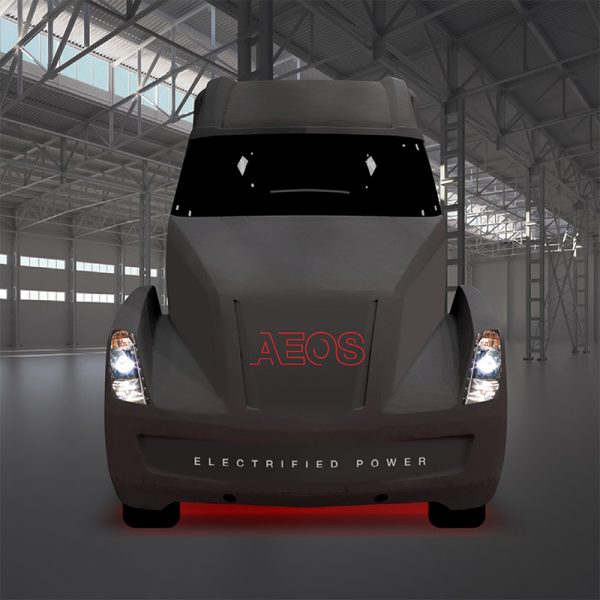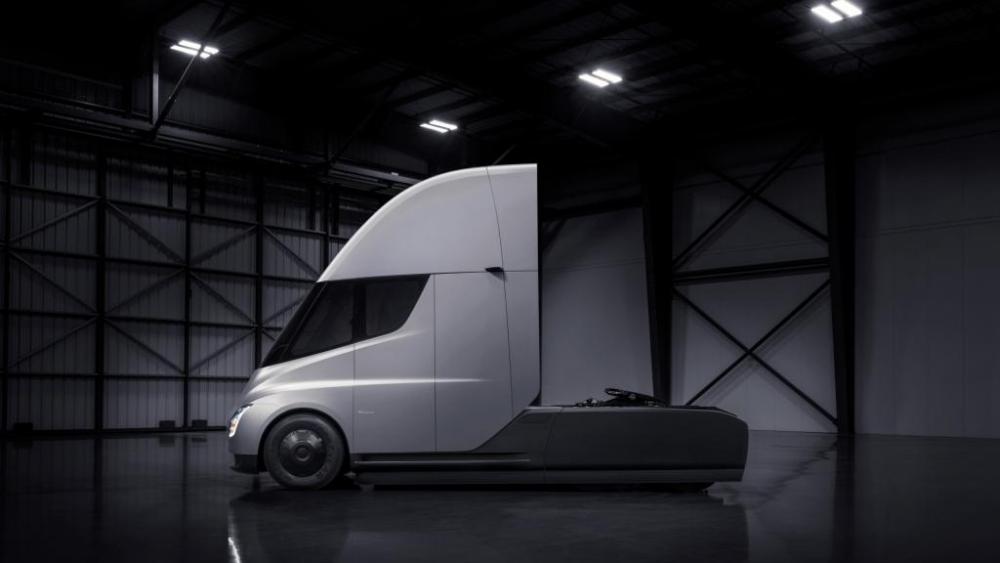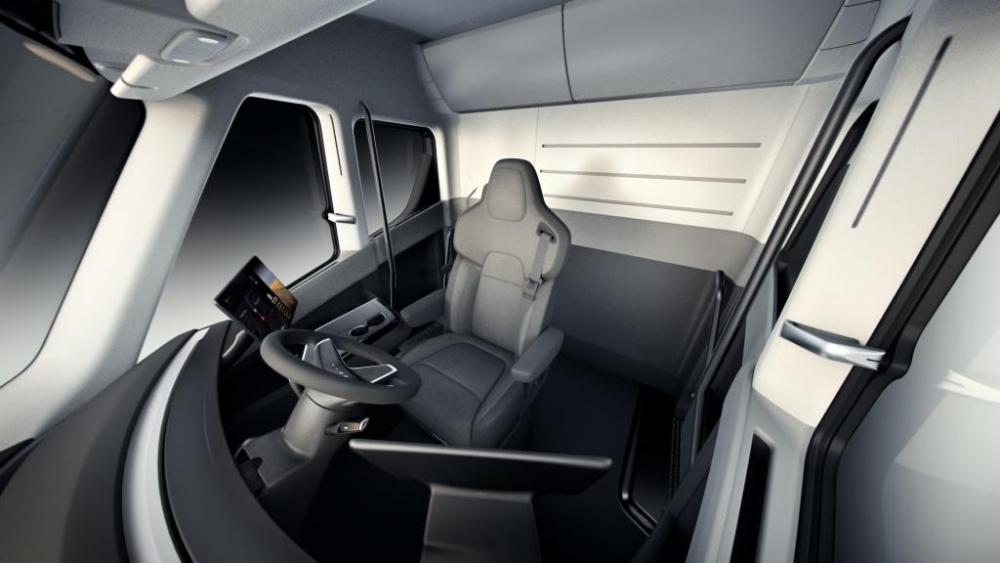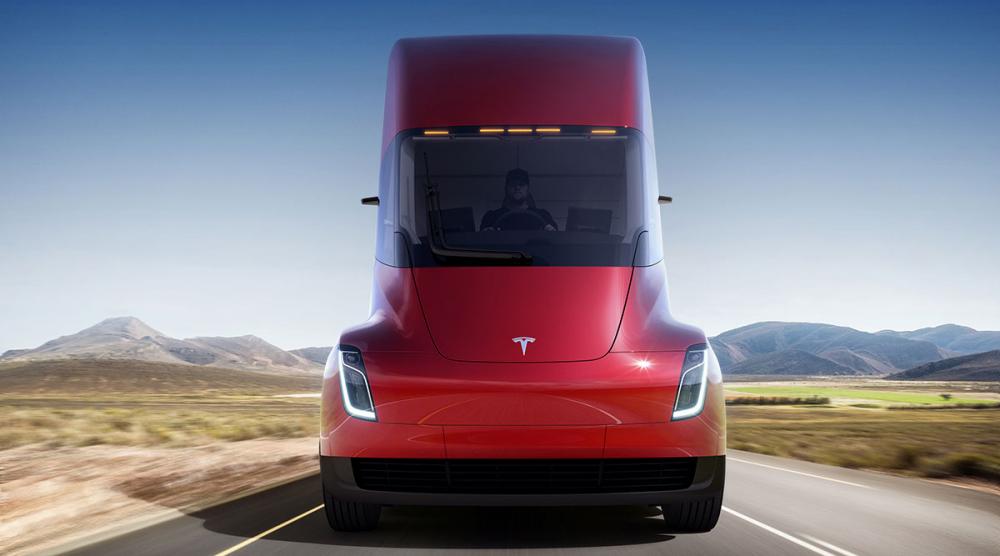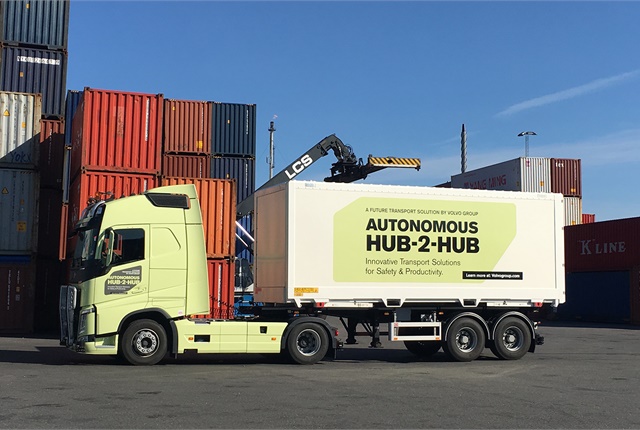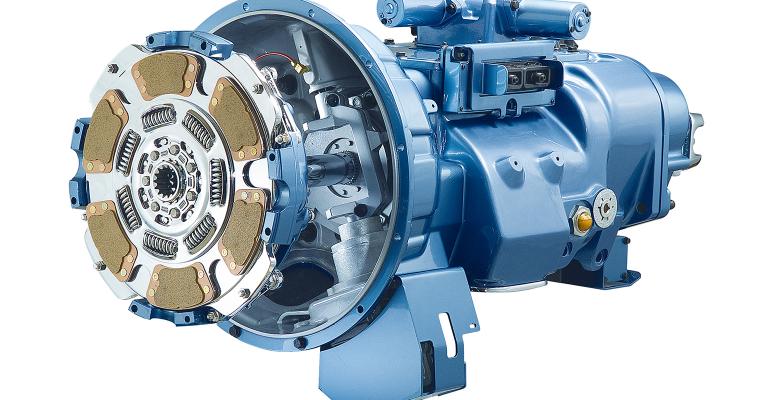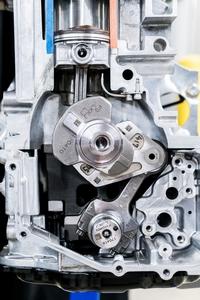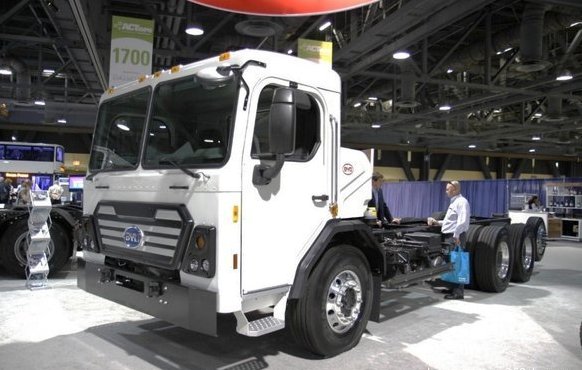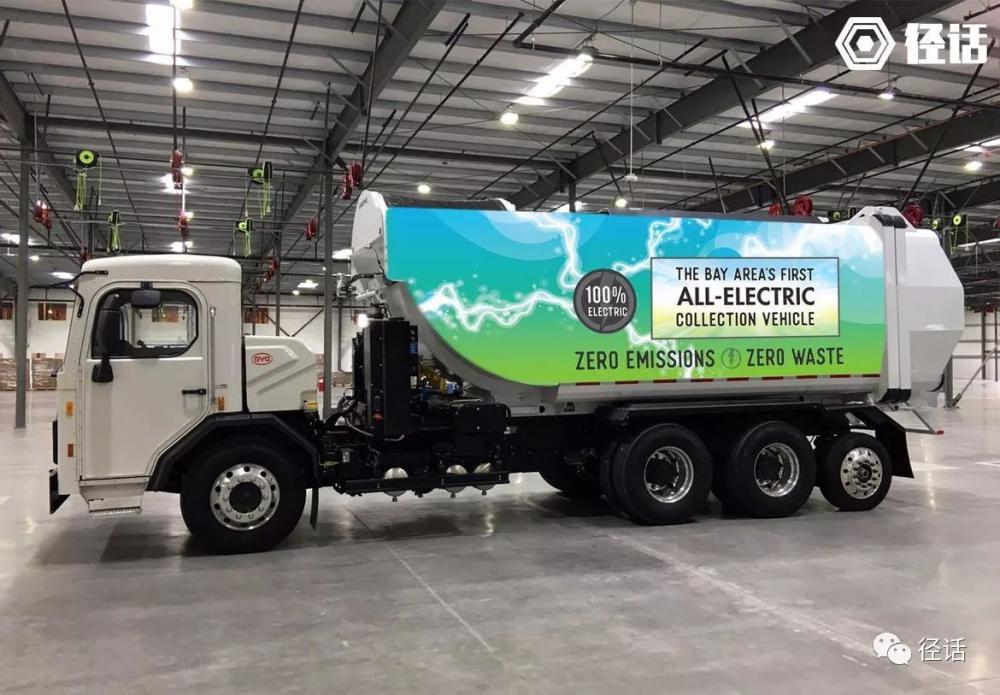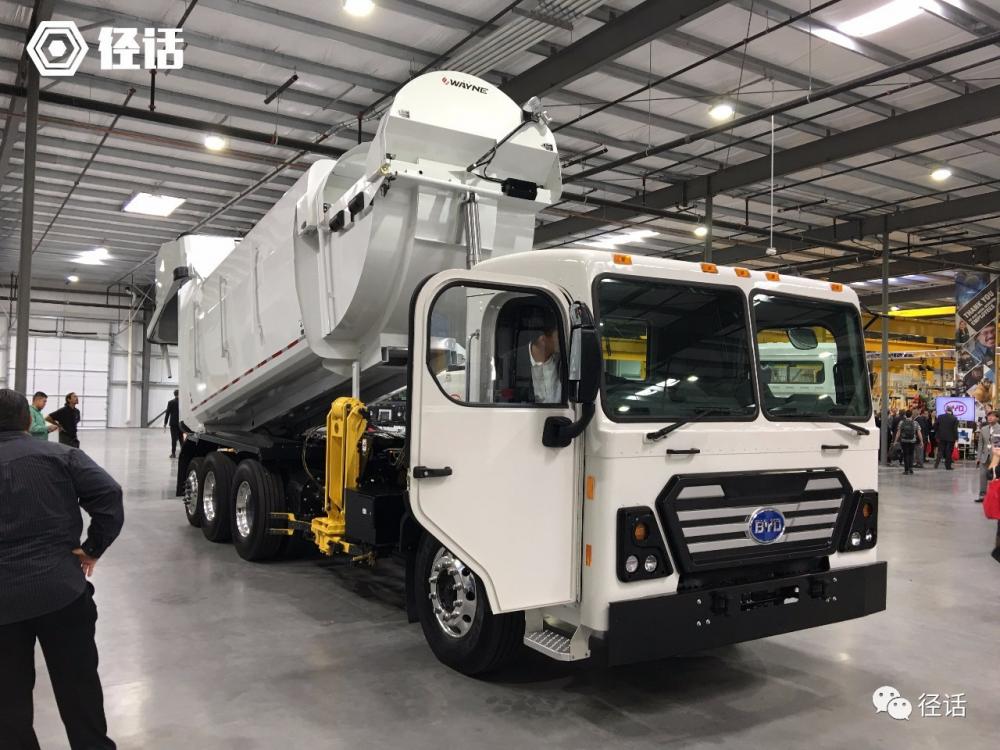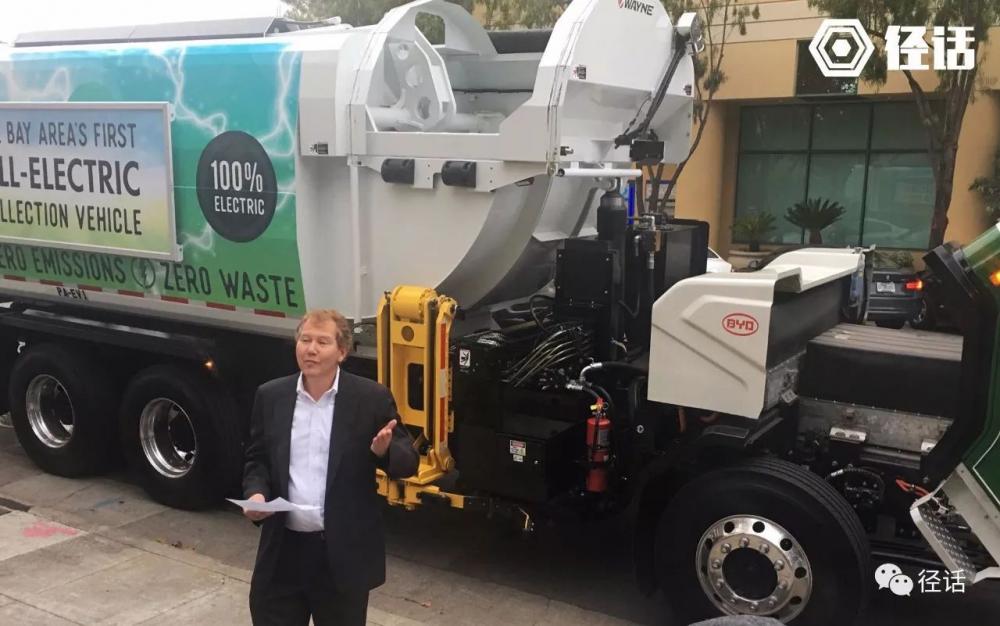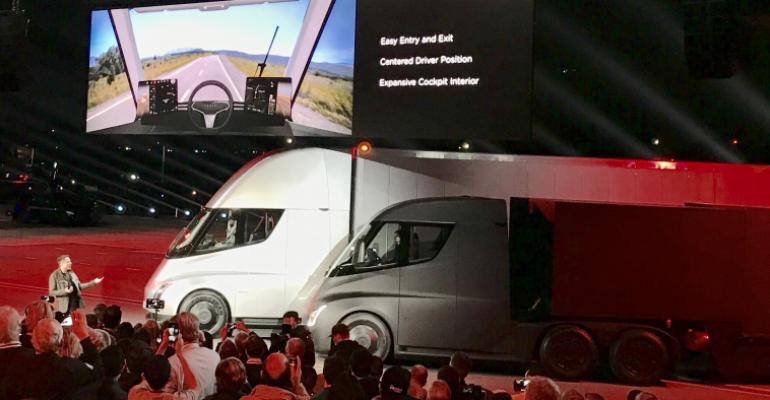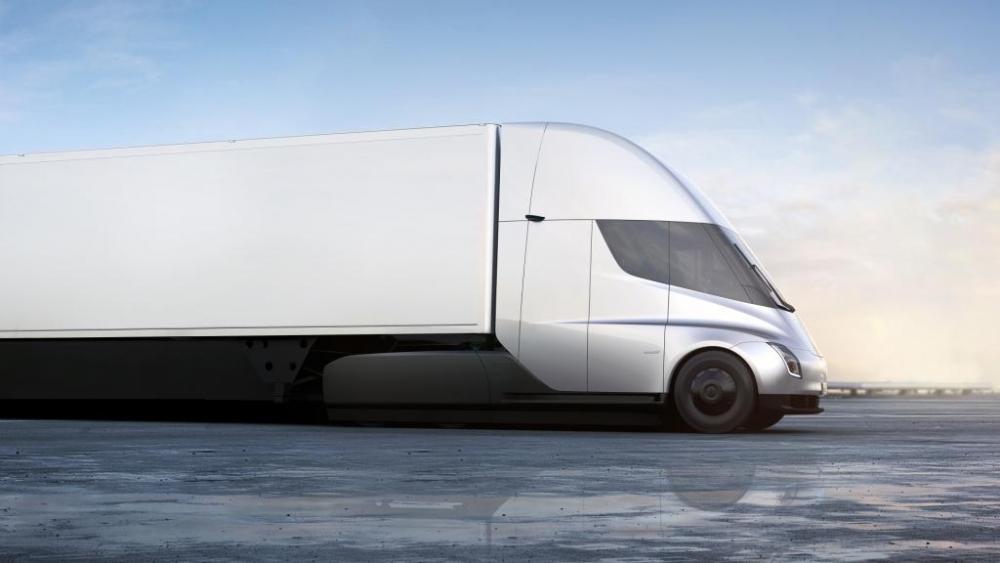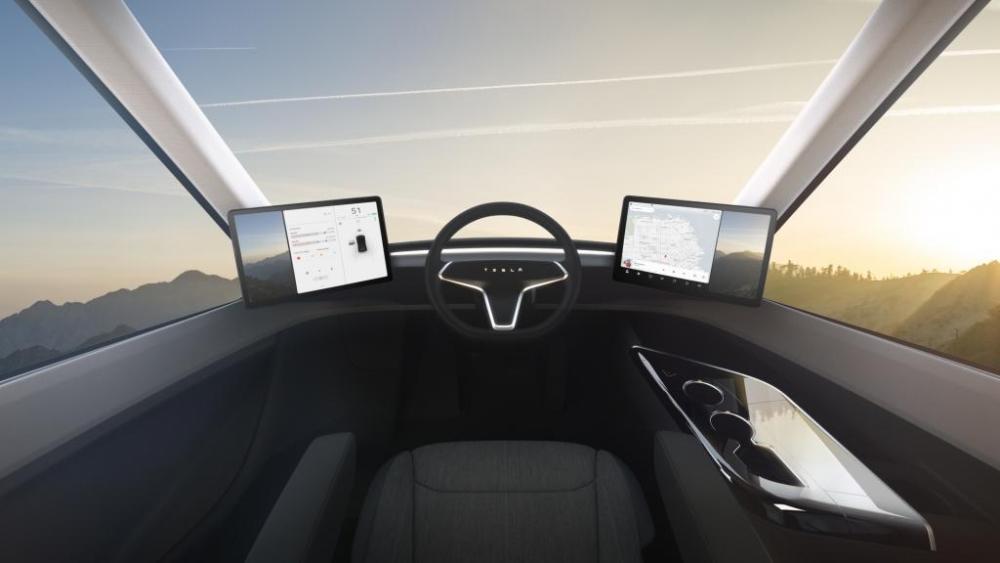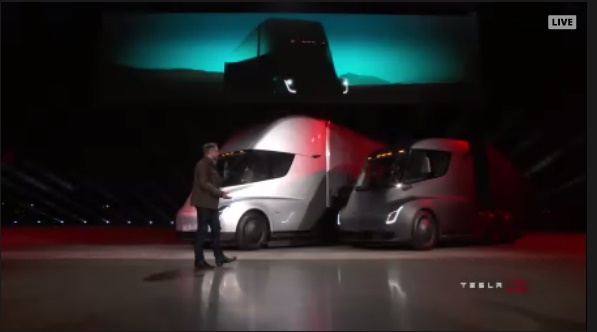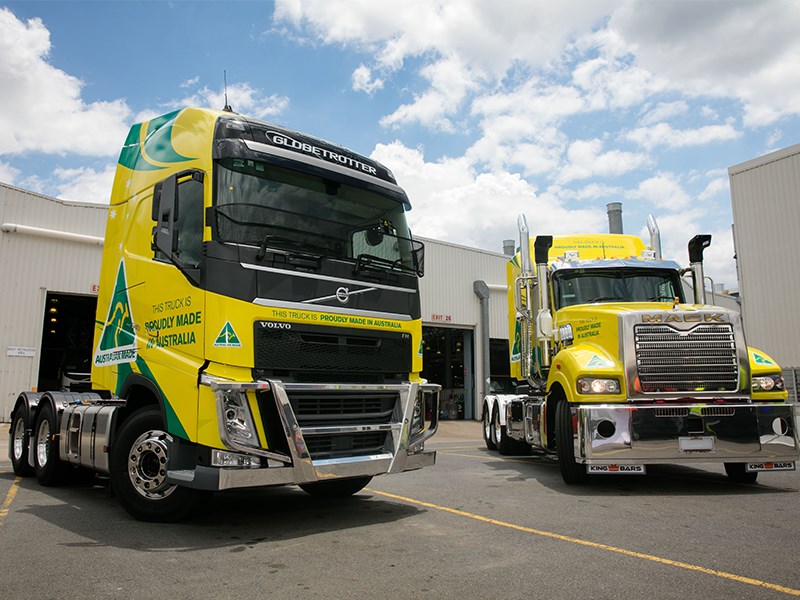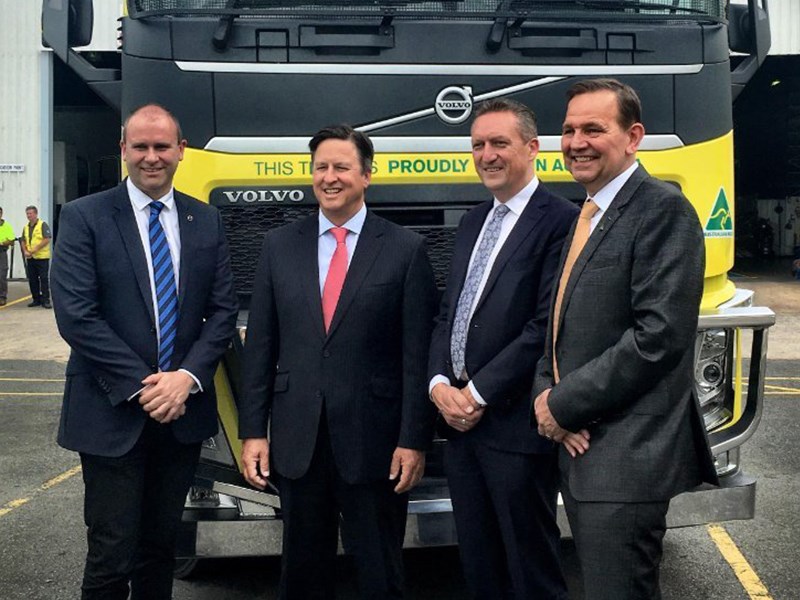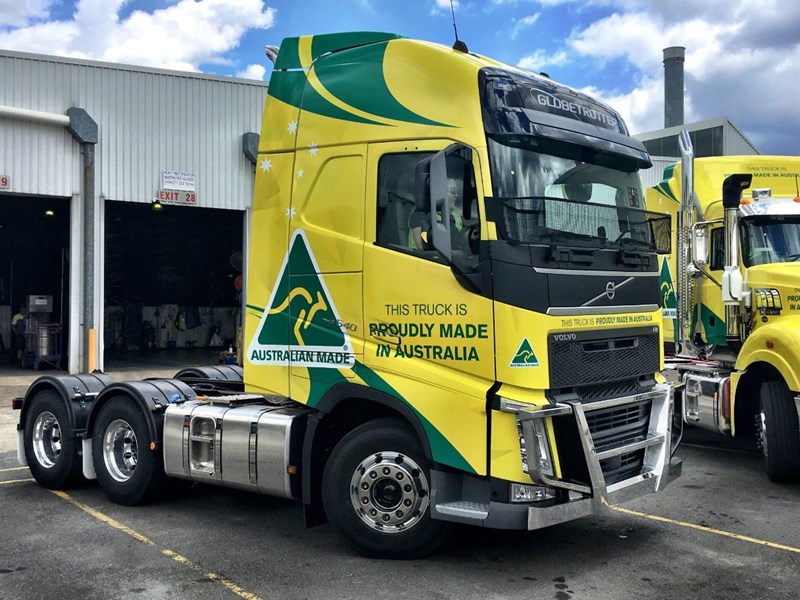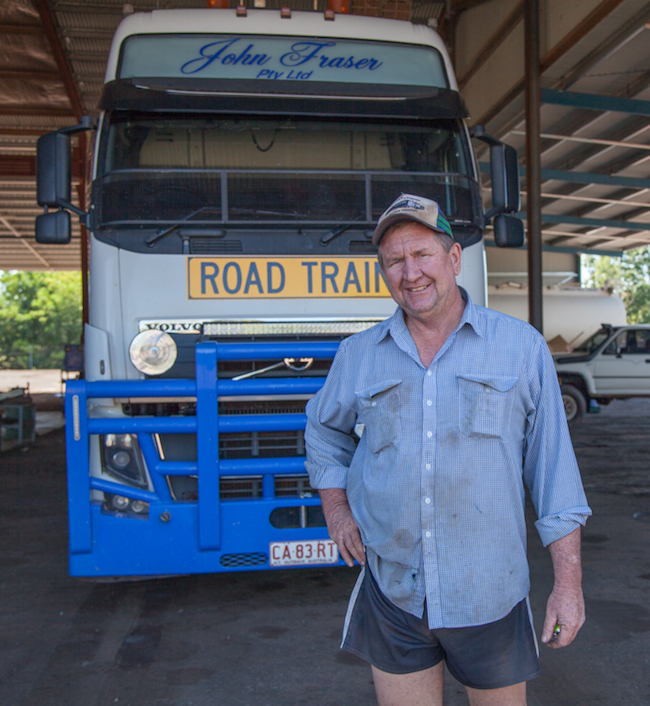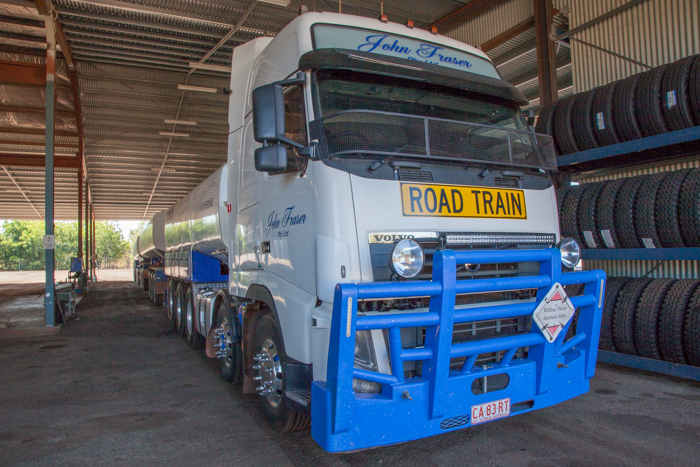
kscarbel2
Moderator-
Posts
17,893 -
Joined
-
Days Won
86
Content Type
Profiles
Forums
Gallery
Events
Blogs
BMT Wiki
Collections
Store
Everything posted by kscarbel2
-
U.S. Navy pilot draws obscene picture in the sky CBS News / November 17, 2017 A U.S. Navy pilot drew obscene pictures in the sky over Washington state on Thursday, CBS affiliate KREM-TV reports. Viewers contacted the station after watching a plane draw what appeared to be crude depictions of a penis in the sky in OkanoganCounty, which borders Canada. The station posted pictures of the drawings on its website. A mother in Okanogan, Washington, told the station she was upset because she might have to explain the drawings to her kids. The Navy told the station that the aircraft involved was based at Naval Air Station Whidbey Island off the Washington coast. The Navy said in a statement that the incident was "unacceptable." "The Navy holds its aircrew to the highest standards and we find this absolutely unacceptable, of zero training value and we are holding the crew accountable," the Navy said. An FAA official told the station there was nothing the agency could do about the incident because it "cannot police morality."
-
Cummins readies next-gen, future commercial power
kscarbel2 replied to kscarbel2's topic in Trucking News
Cummins is scared to death, and they should be. Its US market share will continue to evaporate. Cummins primary market for truck engines over the next 20 years is going to be China, owing to unfolding developments. India will be its number two market. -
The J.B. Hunt order is very interesting. A bit more info here......https://www.bigmacktrucks.com/topic/46136-tesla-electric-truck-news/
-
When Ford roamed the World - The D- and N-Series
kscarbel2 replied to kscarbel's topic in Other Truck Makes
Showing my age, I was given a D-Series "matchbox" truck as a young child in the US. Liked the appearance but of course never saw a similar looking truck on US roads. What Ford did with the model is amazing. They built far higher GVWs than they originally ever envisioned. -
The variable compression ratio engine has arrived
kscarbel2 replied to kscarbel2's topic in Odds and Ends
Mark, my favorite car is a 2-door Saab 99 Turbo with a 5-speed manual. Also always liked the fiberglass-bodied 1970-74 Saab Sonett sports car with the 1.7-litre Ford Taunus V4. -
J.B. Hunt orders Tesla's electric truck, others wait and see Reuters / November 17, 2017 J.B. Hunt Transport Services Inc was the first major U.S. trucking company to back Tesla Inc’s new “Semi” electric trucks on Friday, saying it had reserved multiple vehicles for use on the U.S. West Coast. Neither company responded to calls seeking to clarify exactly how many of the vehicles Hunt was reserving after Tesla unveiled the Semi on Thursday without specifying prices. Hunt’s statement followed a rejection of the new vehicles on Thursday by Old Dominion Freight Line Inc, the United States’ fourth-largest less-than-truckload carrier and other carriers were also more cautious. “Carriers have been skeptical about the heavy-duty tractor applicability to their models, given questions regarding torque, total hauling capacity, and recharging infrastructure,” said Benjamin Hartford, a sector analyst with brokerage Baird. “(J.B. Hunt) the first mover, particularly with regard to Tesla, but we expect other carriers to follow as electric tractor viability becomes proven.” Tesla has been trying to convince the trucking community that it can build an affordable electric big rig with the range and cargo capacity to compete with relatively low-cost, time-tested diesel trucks. In a showy launch on Thursday, Tesla chief Elon Musk said the truck could go up to 500 miles (800 km) at maximum weight at highway speed, allowing it to drive from Los Angeles to San Francisco and back without recharging. Diesel trucks are capable of traveling up to 1,000 miles (1,600 km) on a single tank of fuel. Tesla showed off the semi on a webcast which offered reservations for the truck at $5,000 each, but Musk did not discuss reservation volume. A spokesman for United Parcel Service Inc said the courier had nothing to announce regarding Tesla’s vehicles but would always look for options that fit its needs. Brad Pinchuk, chief executive of Dubuque, Iowa-based Hirschbach Motor Lines, said his firm was looking to test non-diesel big-rig options but needed longer ranges than Tesla could provide and speedier fuel-up times. Pinchuk said he plans to buy two hydrogen-powered trucks made by Salt Lake City-based electric Nikola Motor Company when they are available in 2020. “It’s a different application – putting liquid hydrogen into tanks – so it will be very similar sort of situation to diesel,” Pinchuk said. “You’d be able to fuel up. It would take about the same amount of time to fuel up a diesel and go about the same distance.” ------------------------------------------------------------------------------------------------------------------------ J.B. Hunt Reserves Multiple Tesla Semi Electric Trucks Heavy Duty Trucking (HDT) / November 17, 2017 J.B. Hunt Transportation announced that it placed a reservation to purchase multiple Tesla Semi electric tractors that was unveiled on Nov. 16. The Tesla Semi is slated for launch in 2019 but companies can reserve a truck now for $5,000. J.B. Hunt plans to deploy the electric trucks to its intermodal and dedicated contract services divisions to support operations on the West Coast. “Reserving Tesla trucks marks an important step in our efforts to implement industry-changing technology,” said John Roberts, president and chief executive officer at J.B. Hunt. “We believe electric trucks will be most beneficial on local and dray routes, and we look forward to utilizing this new, sustainable technology.” In April, J.B. Hunt announced a five-year, $500 million commitment to enhancing operating systems, developing cloud infrastructure, and creating innovative and disruptive technologies, as the company commits to meeting the needs of an evolving supply chain and introduces new technology for customers and employees. In addition to its investment in electric trucks, J.B. Hunt is supporting sustainable initiatives such as reducing engine idle time, governing top speed limits, converting over-the-roads shipments to intermodal, optimizing routes for better efficiency, and using biodiesel fuels when possible.
-
EPA to rescind glider kit emissions regs enacted last year
kscarbel2 replied to kscarbel2's topic in Trucking News
-
Cummins readies next-gen, future commercial power
kscarbel2 replied to kscarbel2's topic in Trucking News
Five Things about Electrification You’ll Only Hear from Cummins Cummins Press Release / November 16, 2017 CUMMINS OFFERS A BROAD PORTFOLIO OF PRODUCTS TO HELP CUSTOMERS FIND THE RIGHT SOLUTION TO THEIR POWER NEEDS. YOU’RE GOING TO HEAR A LOT ABOUT ELECTRIFICATION AND TRUCKS IN THE COMING DAYS. HERE ARE FIVE THINGS TO REMEMBER: 1.WHILE ELECTRIFICATION HAS TREMENDOUS PROMISE, IT’S NOT THE ANSWER FOR EVERYONE RIGHT NOW That’s why Cummins has pledged to first bring to market an all-electric powertrain for buses and delivery vehicles by 2019. We believe electric vehicles make the most sense in urban areas where the drive ranges are shorter and the vehicles can more easily be recharged. Many cities around the world are looking at electrification as a means to reduce pollution and greenhouse gases (GHGs). That’s not to say electrification couldn’t someday play a role in long haul trucking. AEOS, the concept electric heavy-duty truck Cummins unveiled in 2017, will help us learn about electrification’s potential with larger vehicles traveling greater distances. 2. IT TAKES MORE THAN AN EXTENSION CORD TO KEEP AN ELECTRIC TRUCK GOING There are still a number of challenges facing electrification in trucking. AEOS, for example, can go 100 miles on a single charge. That won’t get you far when it comes to long haul trucking. Charging AEOS isn’t as easy as plugging it into the nearest outlet, either. It takes an hour to charge when plugged into a 140 kWh charging station, although by 2020 advances in batteries are expected to shrink charging time to about 20 minutes. There also isn’t the service infrastructure that exists for diesel or even natural gas. You could increase the size of the battery, but it would take about 19,000 pounds of battery to go 600 miles on a single charge. That would take a pretty big chunk out of your payload. 3. ELECTRIFICATION DOES NOT SPELL THE END OF DIESEL OR OTHER FORMS OF ENERGY ANYTIME SOON About 75 percent of the trucks on the road today are powered by diesel engines, including more than 90 percent of the long haul trucks. Just based on sheer volume, it’s going to take years before anything replaces that many diesel trucks, especially when you consider the relatively high cost of new technologies early in development. In addition, diesel fuel is the most energy dense liquid fuel available and advances in engines, emissions control technology and cleaner diesel fuels have led to some remarkable environmental gains. In the past 25 years, for example, there’s been a 95 percent reduction in nitrogen oxide (NOx) emissions, a key contributor to smog. New engines like Cummins’ X12 and X15 diesel engines are also seeing significant gains in fuel economy, which translates into GHG reductions. Diesel is also proving to be a good platform for hybrid powertrains, including the use of electrification. As customers adopt different power solutions for different applications, Cummins is uniquely prepared to help manage their fleets because of our expertise in a range of power solutions and our global service and support network. 4. INFRASTRUCTURE MATTERS Part of bringing any new technology to market is having the infrastructure to produce and service it. Cummins has been making truck engines for nearly 100 years and we’ve been working with electrification for decades. The company does business in approximately 190 countries and territories and its customer service and support network is unmatched. When power solutions are economically viable, Cummins brings them to its customers. We will continue to do the same with electrification. The company has already brought things like stop-start technology to our bus engines. Cummins has the people and facilities to develop its capabilities in all the key subsystems and components that are critical to electrified and hybrid power systems. The company’s recent acquisition of Brammo, which designs and develops battery packs for mobile and stationary applications, will help accelerate Cummins’ capability development in battery systems. 5. ONLY CUMMINS IS POSITIONED TO HELP CUSTOMERS PICK THE ENERGY SOLUTION THAT’S RIGHT FOR THEM Every customer’s situation is a little different. At Cummins, we want to offer the right technology at the right time and in the right place. That could be our clean diesel engines powering long haul trucks, our near zero natural gas engines powering major urban transit systems at emissions levels below EPA standards, or our diesel-electric hybrids powering locomotives around the U.S. The bottom line: customers can depend on Cummins to help them find the option that works best for them. Once we find the right solution, we have the global service and support network to keep them up and running anywhere in the world at any time – something that is unique to Cummins. . -
The MR is about to turn 40...
kscarbel2 replied to Maxidyne's topic in Antique and Classic Mack Trucks General Discussion
Billy, we had a customer run his MH off Afton mountain in Virginia. The cab completely disconnected. The cab's safety cage worked as designed.....the driver suffered no serious injuries. -
Tesla debuts electric semi with up to 500 mile range, production set for 2019 Jason Cannon, Commercial Carrier Journal (CCJ) / November 17, 2017 With a style more fitting of Star Wars than Smokey and the Bandit, Tesla’s electric semi made its twice-delayed debut Thursday in Hawthorne, Calif., the home Tesla Motors’ design center and company founder Elon Musk’s SpaceX rocket factory. Promising a range of up to 500 miles at maximum weight and highway speed, the company says the Tesla Semi consumes less than two kilowatt-hours of energy per mile when fully loaded. Battery capacity wasn’t disclosed Thursday night. The company is currently accepting reservations for Tesla Semi for $5,000 per truck with production set for 2019. Thursday’s reveal ended a nearly 15-month-long tease of the Class 8 prototype Musk initially confirmed was in development in July of last year. Without a trailer in tow, Musk says Tesla Semi features a five second 0-60 time, versus about 15 seconds for a comparable diesel truck. At a full-load of 80,000 pounds, he says the electric truck can hit the 60 mph mark in 20 seconds – about a third of the time of a diesel truck – and adds the truck can climb a 5 percent grade at a steady 65 mph. Most diesel Class 8s, he says, would top out around 45 mph on the same grade. “We wanted a vehicle that feels incredible,” Musk says, “that accelerates like nothing else.” Musk didn’t offer torque or horsepower figures for the truck. Driving environment Tesla Semi’s cabin wraps around the center-mounted driver’s seat. “You’re positioned like you’re in a race car,” Musk says. “You have complete visibility of the road. It’s a beautiful spacious interior.” The entry-point is behind the center-seat and in the daycab configuration, the passenger seat is mounted to the rear wall on the right-side. Two touchscreen displays, borrowed from Tesla’s Model 3 passenger car, are positioned on both sides of the driver and provide easy access to navigation, blind spot monitoring and electronic logs. There is no instrument cluster facing the driver. Truck data, like speed and air pressure, is fed to the display to the driver’s left. The steering wheel is also racecar inspired and much smaller than most on the highway today. Built-in connectivity integrates directly with a fleet’s management system to support routing and scheduling and remote monitoring. Each can be flashed over-the-air via updates as-needed. The truck’s steps are unobstructed, allowing for easier entry and exit. The doors open in reverse, suicide-style, as the company removed the front pillar where the vent-style side windows are now located. Grab handles run from the floor to the top of the door pillar and from the floor to the middle of the door jam, giving it three easy contact points. The inside is spacious and full standing-height. The large windshield offers a massive panoramic view and coupled with its large side windows, visibility in Tesla’s Semi is unrivaled. All lighting in the truck is LED, a conversion that was made from bumper-to-bumper. Front marker lights have been moved from the roof to a strip behind the windshield, a nod to improved aerodynamics and the removal of leak points. The truck’s fully electric HVAC system doesn’t require idling and the interior features deep sill and door pockets, along with overhead storage compartments and pocket storage along the rear wall. By eliminating the hum of the engine, Tesla has also eliminated the truck’s white noise filter – meaning every other noise stands out even more. To combat that, the company said it trained its focus on ensuring the cab was tightly fit and sealed against creeks and rattles. The batteries are centered under the truck to lower its center of gravity and give the Semi a more predicable feel, and the air suspension with independent front suspension gives the truck, Musk says, a more comfortable ride. Electric power supply Tesla’s new high-speed Megacharger DC charging station pumps about 400 miles of range back into the truck in about 30 minutes. Chargers can be installed at origin or destination points — such as at fleet terminals — and along heavily trafficked routes, enabling recharging during loading, unloading and driver breaks. “400 miles is like 6 to 7 hours of driving,” Musk says. “What this means is that when you are done with your break, you’ll be ready to go.” Regenerative braking recovers 98 percent of kinetic energy to the battery, giving it a basically infinite brake life. Musk estimates under most cases, drivers will seldom use the footbrake, opting to let the regenerative brake stop the tractor. Tesla says the Semi’s battery is similar in composition to the batteries used in its energy products, and designed to support repeated charging cycles for over a million miles. The truck’s motors – two on each rear axle – are derived from those deployed in the Model 3 and offer independent torque control. Driver safety Tesla says its Semi’s all-electric architecture is designed to a higher safety standard than any other heavy-duty truck on the market, with a reinforced battery that shields the Semi from impact and gives it a low center of gravity. Its windshield is made of impact resistant, explosion proof glass that Musk says resists cracking. Onboard sensors help prevent jackknifing by detecting instability and reacting with positive or negative torque to each wheel while also independently activating the truck’s brakes. “Jackknifing is impossible in this truck,” Musk says. The surround cameras aid object detection and minimize blind spots, automatically alerting the driver to safety hazards and obstacles. “I can drive this truck and I have no idea how to drive a [semi],” Musk says. One of the screens in the cockpit features views from cameras mounted under the side mirrors, eliminating the corner blind-spot. Tesla’s semi-autonomous driving platform, Enhanced Autopilot – and its suite of Automatic Emergency Braking, Automatic Lane Keeping, Lane Departure Warning and event recording – will be standard on the truck, which is also platooning-enabled. Cost of ownership Aerodynamics feature heavily on the Tesla Semi, which Musk says offers a better drag coefficient than a Bugatti Chiron. Rear cab fairings, Musk adds, further streamline aero by adjusting to the type of trailer in-tow to close the gap. With no engine, transmission, after-treatment system or differential for upkeep, Tesla lauds the Semi’s reduced maintenance needs. However, Tesla says the most significant cost-advantage comes from savings in energy costs. Coupled with the low and historically less volatile nature of electricity prices – which average $0.12/kWh in the U.S. and can be significantly less for commercial and industrial users – Tesla says Semi owners can expect to reap upwards of $200,000 in savings over a million miles on fuel costs alone. Further, Musk guarantees the truck will not breakdown for one million miles. In the event one of the motors does suffer a failure, he says there’s little threat to missing a delivery date. “You can lose two of those four motors and the truck will still keep going,” Musk says. The truck is connected to Tesla Mobile Service and its telematics suite offers remote diagnostics, predictive maintenance, location tracking and communication with fleet dispatch. Musk estimates the Tesla Semi will provide a $1.25 cost-per-mile versus a $1.51 diesel cost-per-mile. In a platoon, Musk says the Tesla cost per mile drops to .85 cents per mile, making it cheaper than rail. Entry into a crowded marketplace With Tesla’s entry into the market, the Silicon Valley automaker becomes the latest entry into a growing field. Daimler’s Fuso division in October debuted its E-Fuso Vision ONE concept, a Class 8 truck with a range of up to 220 miles. The first all-electric Class 8 to hit the stage, E-Fuso also featured the longest range before Tesla’s entry into the market. Tesla and Fuso aside, a range of about 100 miles has been the standard-bearer in electric commercial transportation, albeit in lighter commercial truck classes. Unveiled in August, Cummins’ Class 7 Aeos Electric Commercial Vehicle Demonstrator – designed and built in collaboration with Roush – features a 140 kWh battery pack and a 100 mile range. Fuso’s eCanter offers a range of 60 to 80 miles using six lithium-ion battery packs, each with 420 volts and 13.8kWh. Up to two additional battery packs can be added to increase operating range to roughly 100 miles. Chanje’s electric V8070 Class 5 panel van uses a 70 kWh battery for its 100 mile range. Electric power is more prominent in the bus segment and earlier this month, Daimler’s Thomas Built Bus division unveiled an electric school bus that features 100-160kWh of battery energy and a 100 mile fully-electric range. Developed with Volkswagen Truck & Bus, Navistar’s chargE is an electric CE Series concept school bus with a range of 120 miles on a single charge due for launch as early as 2019. Navistar, with Volkswagen Truck & Bus, also plans to develop an electric-powered, medium-duty truck, which could launch as early as 2019. .
-
Tesla, Elon Musk Unveil Electric Semi-Truck Transport Topics / November 16, 2017 HAWTHORNE, Calif. — Tesla Inc. has unveiled its long-anticipated, all-electric Class 8 tractor, marking the electric car maker’s entry into the commercial truck business and showcasing its ambitions to reinvent the industry. Tesla co-founder and CEO Elon Musk introduced the truck here at its Nov. 16 unveiling by driving it into a hangar filled with a waiting audience, then stepping out of the cab. The battery-powered Tesla Semi, set to enter production in 2019, is a daycab with a range of 500 miles on a single charge at highway speeds while hauling 80,000 pounds. “Since the vast majority of routes are under 250 miles, it means that you can go to your destination and back, even if your destination has no charger,” Musk said. With this vehicle, Tesla has redesigned the heavy-duty truck from the ground up, starting with scrapping the internal combustion engine. The truck is powered by a battery situated under the cab floor and is propelled by four electric motors, one at each wheel end on the drive axles. It utilizes regenerative braking and requires no shifting or clutching. The front hood lifts to reveal exterior storage space rather than an engine. The truck’s chassis features a highly aerodynamic, sloped design to improve energy efficiency and prolong battery charge. “We designed the Tesla truck to be like a bullet,” Musk said. Tesla is not positioning this truck as a luxury item. Musk presented a business case for trucking companies built around the total cost of operating the vehicle. Factoring the cost of the lease, insurance, maintenance and fuel, a diesel truck is 20% more expensive to operate per mile than a Tesla Semi, he said. A key component of that calculation is maintenance savings enabled by the electric drivetrain, which Musk guaranteed will last one million miles. Without an internal combustion engine, transmission or emission aftertreatment systems, the truck has fewer moving parts and will require significantly less maintenance than a traditional diesel, the company said. The Tesla Semi also features a radically different setup for the driver. The driver’s seat is located in the center of the cab rather than on the left side, a design choice aimed at improving visibility. “You’re positioned like you’re in a race car,” Musk said. “You have complete visibility of the road and all the surroundings.” Inside the cab, the driver is flanked by two large touchscreen displays, one on either side of the steering wheel. Those screens replace the traditional dash display and contain all instrumentation, including the speedometer and controls for heating and air conditioning. The screens also display turn-by-turn navigation and video from blind-spot cameras. Tesla showcased two versions of the truck at the unveiling. They were the same mechanically, but one was optimized for aerodynamics with a high roof and fairings covering the drive wheels, while the other was outfitted for shorthaul operations. Tesla has not indicated where it will manufacture the trucks. By unveiling the Tesla Semi, Musk has added commercial trucking to his list of business ventures. The inventor and business magnate also is pursuing space travel and solar power with SpaceX and SolarCity, as well as transportation via pods in sealed tubes with Hyperloop. With its truck, Tesla will attempt to drive the commercial trucking industry toward electric power as it has already done in the passenger car market. The Tesla Semi’s 500-mile range would make it well-suited for dedicated regional operations where the vehicle can recharge at a fleet’s terminal. But Tesla plans to build a network of charging stations to enable the truck to travel anywhere, much like its expanding charging infrastructure for its passenger cars. And Musk made the case that recharging the Tesla Semi will not be a time sink. The vehicle could plug in at its destination while unloading freight, or drivers could simply recharge it when they stop to use the bathroom or get a bite to eat. Charging stops could align with drivers’ required 30-minute rest breaks under hours-of-service rules. “What this means in practice is by the time you’re done with your break, the truck is ready to go,” Musk said. “You will not be waiting for your truck to charge.” The Tesla Semi also will come equipped with a Level 2 automated driving system dubbed “Enhanced Autopilot,” which includes automatic emergency braking, automatic lane keeping and lane-departure warnings. “Every truck we sell will have Enhanced Autopilot as standard,” Musk said. The driver-assist technology is similar to the Autopilot system available in Tesla’s passenger cars. When engaged, that feature automatically maintains the vehicle’s lane while keeping a safe following distance, but requires the driver to remain attentive and keep his or her hands on the wheel. With the Tesla Semi, that technology goes a step further. If the driver has a medical emergency and becomes disabled, the truck will stay in its lane and gradually come to a halt, and even call emergency services, Musk said. “This is a massive increase in safety.” Tesla also has designed the truck to automatically prevent jack-knife accidents, which Musk described as a trucker’s “worst nightmare.” With its independent motors on each wheel, the truck will dynamically adjust the torque on each wheel so that jackknifing is “impossible,” he said. Musk began the presentation by touting his electric semi’s performance compared with that of a diesel truck. The Tesla Semi can accelerate from zero to 60 miles per hour in five seconds. Even pulling 80,000 pounds, it can reach 60 mpg in 20 seconds, he said. The Tesla Semi also can do 65 mph going up a 5% grade, compared with 45 mph for a diesel truck, he added. Tesla said the truck will integrate directly with a fleet’s management system to support routing, scheduling and vehicle tracking. Musk also highlighted advantages for reliability and maintenance. Because the truck has four independent motors, it can lose two of them and keep going, he said. “In fact, even if you only have two of the four motors active, it will still beat a diesel truck.” At the same time, the electric motors can turn the brakes into generators. The kinetic energy of braking goes back into the battery pack instead of wearing down the brake pad, Musk said. “The brake pads basically last forever.” The truck also comes with “armor glass” to prevent cracked windshields, a common repair issue. “This detail matters a lot,” Musk said. . .
-
Volvo - Autonomous truck for hub-to-hub transportations
kscarbel2 replied to kscarbel2's topic in Trucking News
Volvo Demonstrates Autonomous Truck Technology Heavy Duty Trucking (HDT) / November 15, 2017 Volvo Group demonstrated a new self-driving truck, designed to travel autonomously from one hub to another, at the Volvo Group Innovation Summit in Beijing, China. The latest autonomous concept truck was designed for hub-to-hub transportations in semi-confined areas such as harbors and dedicated lanes on highways. The company previously showed similar autonomous concepts for confined areas such as mines, quarries, and sugarcane fields, and this new solution takes those ideas into an over-the-road setting. The truck is based on the company’s existing FH platform and navigates completely autonomously, using lidar and GPS to continuously scan its surroundings and check its location. It can navigate around fixed and movable obstacles and gather data to optimize its route, traffic safety, and fuel consumption. The truck requires no manual supervision and is part of a total transport solution that controls the entire delivery process. “Although this technology may be years away from production, it will undoubtedly influence our future offering and has the potential to develop smart societies for the future,” said Martin Lundstedt, president and CEO at Volvo Group. “No matter what type of solution we develop, safety is always our primary concern and this applies to all our self-driving projects.” . -
Fleet Owner / September 16, 2017 Eaton Cummins Automated Transmission Technologies has introduced a new fuel economy-focused calibration designed "to meet and exceed the distinctive demands" of Mexican commercial trucking. The newly-configured 18-speed Eaton UltraShift PLUS MXP automated transmission will be paired with a Cummins ISX15 diesel engine, delivering a powertrain designed for premium performance and maximum fuel efficiency in Mexico's unique driving conditions, according to the Eaton-Cummins joint venture. "We collaborated with local Eaton, Cummins, and customer experts to analyze duty cycles and fuel economy requirements for the region," said Alex Stucky, product strategy manager of linehaul at Eaton Cummins Automated Transmission Technologies. "We then took the UltraShift PLUS MXP transmission, which is typically targeted for highly-demanding and rigorous applications, and developed fuel economy calibrations optimized to the Cummins ISX15 engine models available in Mexico." For this customization, more than 100 key parameters were analyzed, modified and tuned on the UltraShift PLUS MXP automated transmission, Stucky added. These included alterations to downshift points, upshift points, retarder limits, demand modulations, acceleration pedal tuning, and grade offsets while leveraging MXP gear ratio coverage to maintain engine efficiency. The new integrated powertrain offering is available with IntelliConnect for fleets in Mexico using Geotab web-based analytics. IntelliConnect is a telematics capable system that provides near real-time monitoring of vehicle fault codes, prioritizes critical events as they emerge, and provides action plans by technical experts at Eaton. The new powertrain package will be available as a service release in December, with production availability in the first quarter of 2018. .
-
The variable compression ratio engine has arrived
kscarbel2 replied to kscarbel2's topic in Odds and Ends
Infiniti [Nissan] rolls out industry-first variable compression engine Richard Truett, Automotive News / November 16, 2017 PHOENIX -- When the next-generation Infiniti QX50 crossover arrives next year as a 2019 model, it will be powered by a 2.0-liter turbocharged four-cylinder engine introducing a technology never seen before in a regular production vehicle: variable compression. Under development at Nissan for 20 years, the Variable Compression – Turbo -- VC-T engine -- has a device that changes the distance the pistons travel in their cylinders by as much as 6 mm, or about a quarter of an inch. It's an idea that automakers, such as Saab, and engine developers, including AVL, have tried to perfect over the years. The reason: Varying the compression ratio has the potential to offer dramatic improvements in power and efficiency. Shinichi Kiga, Nissan's chief powertrain engineer, says Infiniti's VC-T engine is expected to deliver a combined city-highway EPA-rated fuel economy gain of 27 percent over the QX50s's outgoing 3.7-liter V-6. The VC-T engine is rated at 268 hp and 288 pound-feet of torque. Kiga says the 2019 QX50 will reach 60 mph almost one second faster than its four-cylinder competitors. Infiniti last week allowed a few reporters to drive early pilot-build 2019 QX50s at the company's test trackhere. The VC-T's power and refinement were impressive. The technology works in such a manner to make it invisible to the driver. There are no buttons to press, no switches to turn and no strange noises, vibrations or sounds -- just smooth, abundant power and a pleasing, performance-tinged growl from under the hood. How it works The pistons in all of today's automotive internal combustion engines travel the same distance up and down in the cylinder, regardless of speed and vehicle load. The pistons are connected to rods that are mounted to the crankshaft. The engine's compression ratio is fixed and is determined by the amount of space above the pistons when they are at the top of their travel. The smaller the space above the pistons, the higher the compression ratio and the greater the engine's power output. New layout The Infiniti engine's layout is the first major change to the system in more than a century. The pistons in the VC-T engine are connected to rods that are attached to one end of an elliptic device Nissan calls a multilink. The multilink is mounted on the crankshaft where the connecting rods normally go. The other end of the multilink has a short rod that is connected to a shaft. An electrically controlled actuator twists the shaft, causing the multilink to tilt up or down slightly. When the end of the multilink closest to the piston is tilted up, the piston travels to the top of the cylinder. That is high-compression mode, 14.1. When the multilink tilts down, the piston's travel in the cylinder stops before it reaches the top. This lowers the compression ratio to 8.1, but because the turbocharger kicks in at the same time, the engine's power output increases. The turbocharger pressurizes each cylinder with a denser mixture of fuel and air, which increases power. "Variable compression solves the age-old problem of compromise," says analyst Dave Sullivan of AutoPacific, a consulting firm. "Automakers have the task of meeting increasing emissions regulations and tightening fuel economy standards while consumers want more power. They have to dial down the compression to make everyone happy. "Nissan's variable compression engine should appease the enthusiasts as well as those concerned with fuel economy." Robust target Kiga said Nissan has long known that its multilink mechanical system of varying piston travel would not just work but also be robust enough for a production engine. The reason for the 20-year gestation is that engine-control technology was not yet advanced enough to manage the complex system. "Control technologies helped us accelerate the development," Kiga said. The engine uses nearly all the advanced technologies found in today's production engines. In addition to the turbocharger, the VC-T has both port and direct fuel injection, variable valve timing and a cooling system with four circuits. All of these systems provide inputs to the engine's computer, which runs a fast-spinning electric motor that operates the actuator arm that changes the piston travel. The VC-T adds cost but is less expensive than a diesel engine. The VC-T engine, Kiga says, is about 10 percent more expensive to produce than a regular 2.0-liter turbo four-cylinder engine. And although the VC-T has more moving parts than other turbocharged, four-cylinder engines, Kiga says it produces less friction. One reason is because the piston travels straight up and down in the cylinder, eliminating side forces that cause friction. The current QX50, with its 3.7-liter V-6 engine, has a EPA fuel economy rating of 17 mpg city, 24 highway and 20 combined. When the new QX50 goes on sale, the combined fuel economy should be around 26 mpg, about what a diesel-powered vehicle of the same size would achieve, but without a lot of the emissions-system complexity. The VC-T engine will be the only one offered in the QX50, and it will be available with just one transmission, a continuously variable automatic. 'Longer legs' Although the Infiniti VC-T engine appears to be a significant advancement of the internal combustion engine, it may not have a huge impact, as governments around the world crack down on internal combustion engines and as automakers gear up to sell electrified vehicles. "The 2.0-liter turbo has essentially replaced the 3.5-liter V-6. It's a very crowded space in which to set yourself apart," said Sullivan. "Combined with the continually variable transmission, the VC-T engine could yield some impressive fuel economy numbers. But with the relative stability of low fuel prices, it may not mean much to QX50 buyers. The immediate impact may not be felt with the QX50. But this technology only gives the internal combustion engine longer legs." While the VC-T's performance and refinement in the test QX50s were outstanding, perhaps a downside for potential buyers is that the engine requires premium gasoline, which was averaging $3.09 per gallon, according to AAA, 52 cents more per gallon than regular. . -
BYD Delivers First All-Electric Side Loader Refuse Truck Heavy Duty Trucking (HDT) / November 15, 2017 The first all-electric automated side loader refuse truck from BYD was presented to the City of Palo Alto Calif., and GreenWaste, the city's waste hauler service provider. The BYD electric refuse truck uses its batteries for propulsion, as well as to power the hydraulic system for the body. The electric refuse truck has 76 miles of range and requires only two to three hours maximum to fully charge. The truck will operate on a variety of service routes in the community from urban to residential neighborhoods including streets with steep inclines. The truck was unveiled in a ceremony at City Hall with Palo Alto Mayor Greg Scharff, who praised BYD and GreenWaste for its efforts to bring the electric refuse truck to the Bay Area. “I want to thank the manufacturer, BYD, and our refuse hauler, GreenWaste, for building and piloting the Bay Area’s first all-electric reuse collection truck,” said Palo Alto Mayor Scharff at the unveiling. “It will save 72 metric tons of greenhouse gas emissions a year and help us meet Palo Alto’s ambitious goal of an 80% reduction in these emissions by 2030.” According to BYD, GreenWaste and the City of Palo Alto will realize savings of more than $16,000 annually due to the truck’s efficient electric motors and controls and the less maintenance that is required for the propulsion systems. GreenWaste will monitor and collect data from the electric refuse truck’s routes to determine if additional electric refuse trucks can be purchased in the future to replace its entire diesel truck fleet. .
-
Tesla's electric Class 8 to offer 500-mile range Neil Abt, Fleet Owner / November 17, 2017 CEO Musk says Semi will arrive in 2019 HAWTHORNE, CA. Tesla finally unveiled its long teased electric Class 8 truck on Nov. 16, which CEO Elon Musk said has a 500-mile range and will result in “economic suicide” for fleets that stick with traditional diesels. “It blows my mind – I think it will blow yours,” Musk said as he emerged from one of the two prototype Semi day cabs. As he addressed a raucous crowd that resembled a rock concert more than a truck unveiling, he spent 30 minutes outlining the reasons he believes this vehicle will revolutionize trucking when it hits the road in 2019. The 500-mile range, Musk said, is a worst-case scenario, based on being full loaded and traveling at maximum highway speeds. “You can get to your destination and back, even if your destination has no charging,” Musk said. With use of megachargers, a new high-speed charging solution, truckers can add 400 miles in 30 minutes. The chargers can be installed at origin or destination points, and along heavily trafficked routes. Musk did not take questions from the media or disclose a purchase price. However, he declared the Semi has “the lowest cost of ownership,” with an estimated cost of $1.26 a mile at a guaranteed 7 cents per kilowatt hour, compared with an average of $1.51 a mile for a conventional diesel. A Tesla fact sheet said “owners can expect to gain $200,000 or more in savings over a million miles based on fuel costs alone.” Musk added the cost of ownership is nearly half of diesel trucks when the Semis are linked in a platoon. Musk not only called it “economic suicide” to use a diesel truck, but said the economics of the Tesla Semi outperform freight railroads as well. Throughout his presentation, he took numerous shots at the overall appearance and performance of today’s conventional trucks. He said the Tesla Semi goes from 0 mph to 60 mph in 5 seconds without a trailer, compared with 15 seconds for a diesel. It climbs 5% grades at a steady 65 mph, while diesel trucks max out at 45 mph. That makes a “gigantic difference” for truckers who are paid by the mile, he told the audience made up largely of Tesla car owners. The improved performance is achieved by the vehicle’s “bullet-shaped nose,” completely flat bottom, and reduced gap between the tractor and trailer. The truck has four Tesla Model 3 electric motors – one for each rear wheel. With no shifting or clutching there is smoother acceleration and deceleration, and its regenerative braking recovers 98% of kinetic energy to the battery, giving it a basically infinite brake life, the company said. The roomy interior is also quite different than trucks currently available, including a driver seat positioned in the center. Musk said the centered seat and camera system provide complete visibility of the roads, while two large screens next to the steering wheel provide navigation and other data truckers need while on the road. Every Semi will come standard with “enhanced autopilot,” including emergency braking, lane keeping assist, and collision avoidance. Onboard sensors that detect instability and the vehicle’s lower center of gravity means “jackknifing is impossible,” Musk said. Among the loudest reactions from the crowd came from Musk’ declaration the truck will “not breakdown for 1 million miles.” Even if two of the four motors break down, the truck will keep running and will “still beat a diesel truck.” If there are any problems, it will be detected by Tesla’s remote diagnostics service, similar to the many “uptime” features offered by existing truck and engine manufacturers. One problem truckers should not expect is a cracked windshield, thanks to glass that is thermonuclear explosion proof, Musk claimed, noting that was his favorite feature. And much as you might expect from a rock concert, just when it appeared to be was over, there was an encore: a new Tesla Roadster emerged from one of the trailers, drawing the loudest reaction of the evening. .
-
First Look: Tesla's All-Electric Semi Truck Jack Roberts, Heavy Duty Trucking (HDT) / November 16, 2017 LOS ANGELES – The highly anticipated Tesla electric semi has finally arrived. And, as hinted, teased and promised these many past months, it is a potential game-changer — and quite possibly a disruptive vehicle for trucking in many ways. Tesla chose to launch the truck at its SpaceX facility in the Los Angeles suburb of Hawthorne, with more than 1,000 journalists in attendance from around the globe. Security was incredibly tight as journalists were taken in small groups to a small hanger, where two Class 8, all-electric daycab models were on display with engineers on hand to explain various vehicle systems and features. Highlights from the unveiling event: • Tesla chief Elon Musk promised a 500-mile range. "You can go out to the middle of nowhere and come back." • 400 miles charge in 30 minutes, leveraging a global network of "megachargers" • Electric drivetrain guaranteed for 1 million miles, and brake pads may last as long as truck • Musk said diesel trucks are 20% more expensive per mile than the Tesla semi in total cost of ownership. • Enhanced Autopilot will be standard. • Production to begin in 2019. A Tesla Semi Walk-Around While the initial vehicle walk-around focused on a very high-level view of the truck, there’s still a lot of information available. For starters, the unveiled truck very closely resembles the now-familiar blacked-out teaser photos that Tesla released months ago. This includes a highly aggressive aerodynamic design dominated by a Corvette-like front end and a steeply sloped hood. Remember, there is no internal combustion engine at the front of this truck, which allowed Tesla engineers to completely rethink its configuration with an emphasis on safety and visibility. One particularly slick feature is the LED marker lights at the top of the cab, which are located behind the windshield and shine through a darkened strip at the top, keeping them completely protected from the elements. The massive batteries that power the truck are located directly underneath the cab, while the electric motors they power are arranged between the frame rails behind the cab and running under and aft of the fifth wheel. Tesla says these are the same electric motors found in Tesla Model 3 cars. One electric motor powers each drive wheel-end. The motors are computer controlled and can deliver electrical power individually based on tractive requirements, a trait that Tesla says gives the truck “fantastic” traction in a variety of road conditions and excellent lateral stability and handling at highway speeds. The cab of the Tesla truck features an array of innovations and design departures backing up Tesla’s claim that the truck is a clean-sheet, “ground-up” design. The extremely tall, 8-foot-high doors of the cab are located farther back than conventional truck designs and swing open toward the rear of the vehicle in a “suicide” style. This is to keep the door hinges flush inside the cab body and maintain the overall slippery aerodynamic profile of the truck. Entry is as easy as climbing up the porch steps into your house, with two sturdy grab-handles on either side to help out. You enter the cab behind the center-positioned driver’s seat, which can be accessed easily from either side of the truck. The cab interior is incredibly spacious and allows a 6-foot-tall person to stand comfortably thanks to the high-roof ceiling, which is at least 71 inches in height. This is a day cab truck, so a jump seat is mounted to the back wall of the “passenger” side of the truck. The driver’s station is a revelation in itself. The seat features a memory air-ride system and is extremely comfortable. There is no dash in front of the seat. There is no conventional transmission selector, either. In all, it is a strikingly Spartan, uncluttered design that is focused on expansive exterior views in front and to the sides of the truck. In place of a conventional dashboard, the driver has two Tesla screens mounted on either side at the 10 o’clock and 2 o’clock positions that display all vehicle information and allow the driver to control all the vehicle systems. Both screens feature side-and-downward camera views on their bottom sections, which allow the driver to see persons or obstacles on or near the steps leading up into the cab. Tesla says the truck can easily upload an ELD that drivers can access on the display screens as well, and the entire system was designed to be expandable as new technologies, such as blockchain, become available. These screens, which are highly reminiscent of handheld tablet computers, are highly configurable. In the version displayed in Hawthorne, the left-side tablet displayed all pertinent vehicle operating information, such as battery range, speed, and air pressure. The right-side screen was dedicated to a Google maps GPS display and other vehicle systems such as lighting and climate control. The cab gets wider the farther back the cab goes, but the nose of the truck, where the driver sits, features pop-open windows on either side with enough space to pass a clipboard through, as well as cup holders and comfortable armrests. The steering wheel setup is arresting, too. Instead of the usual wide-diameter wheels common in big rigs today, the pedestal-mounted Tesla wheel is positively tiny — more like something you’d find in a Formula 1 race car than a semi truck. The cab features ample storage places to the sides, above and behind the driver. Tesla says the truck was designed with as few moving parts as possible to minimize maintenance costs and features a regenerative braking system that, in addition to recharging the truck’s batteries, reduce brake wear. This is a developing story. Tesla CEO Elon Musk is expected to offer more specifics on the new Tesla truck as the evening progresses and the story will be updated accordingly. .
-
When Ford roamed the World - The D- and N-Series
kscarbel2 replied to kscarbel's topic in Other Truck Makes
-
ATA commends Volvo’s local manufacturing milestone
kscarbel2 replied to kscarbel2's topic in Trucking News
Automotive manufacturing not dead in Australia: Voorhoeve Australasian Transport News (ATN) / November 16, 2017 Volvo chief says the group’s production milestone is a mark of local manufacturing success Volvo Group Australia president and CEO Peter Voorhoeve highlights the success of the Group’s Brisbane-based Wacol factory with the announcement of its 60,000th locally made truck. Voorhoeve says Volvo’s production milestone demonstrates that automotive manufacturing is alive in Australia despite closures of car manufacturing units here. "Our Wacol plant has been operating since 1972, and houses manufacturing and engineering facilities to produce both Volvo and Mack trucks," Voorhoeve says. "The plant makes a significant economic contribution to the local area, and it does it without any government subsidies. "We have close to 450 people directly employed in the production process, about 50 dedicated engineers based in Brisbane. "The Wacol factory also has approximately 85 local suppliers delivering more than 3,500 different components to the Wacol factory – of which, many are produced right here in Australia." Australian Truck Association (ATA) chair Geoff Crouch and CEO Ben Maguire were present at the Wacol site to celebrate the achievement with Voorhoeve, Volvo Trucks Australia vice president Mitch Peden, Australian Made CEO Ian Harrison, and other guests. Volvo Group Australia joins Australian Made Campaign The production milestone coincides with Volvo Group receiving the Australian Made Campaign certification to carry the iconic green-and-gold ‘Australian Made’ logo. Volvo Group Australia is now the only truck manufacturer in Australia to have been awarded this certification. "We’re delighted that Volvo Group Australia has joined the campaign," Harrison says. "It reflects their commitment to promoting local manufacturing, both in its direct production operations but also through their support of the local automotive components’ industry." Investment to meet Australian trucking’s long-term needs Voorhoeve also spoke about the unique challenges of the Australian truck market. "Our trucks work harder than anywhere else in the world. Our loads are heavier, the climate is hot and dusty, and the distances are greater," he says. "But our Australian engineers leverage the globally proven vehicle platforms and latest innovations to design trucks that are tailored for the unique Australian conditions. "It’s a very competitive market here in Australia, but building trucks locally means we can meet and exceed the demands of customers in this competitive market, by building them a truck that is exactly to their specification." Volvo Group Australia’s local investment plans Voorhoeve details the Group’s current and future investment plans for its Australian facilities. "We are committed to manufacturing trucks in Australia and have invested over $27m in the production facility alone in the last six years, and will invest a further $3.7m in upgrading our chassis treatment and cab paint process," he says. "We’re talking about a lot of money, which is a reflection of how confident we are in local manufacturing. "We are also investing considerably, together with our private partners, in our dealerships and customer service network." Voorhoeve explains that, between the Volvo Group and private partners, approximately $160m worth of investment will have been made between 2014 and 2018 in its dealership and service network. "Of the $160 million in investments for 2014 to 2018, Volvo Group will have contributed $65 million to finance projects," he says. "These include several to be completed in 2018, notably, new national headquarters, and new dealerships in both Brisbane and Sydney." Trucking remains big business in Australia Voorhoeve says that the investment amounts are considerable because trucking is big business in Australia. "The road freight transport industry is generally quite humble, and rarely in the spotlight despite being a $42 billion industry. Almost everything we touch, eat and use has been on a truck at some stage," he says. "The industry employs approximately 150,000 people across more than 40,000 businesses, contributing $8.4 billion in wages back into the economy." While growth in the transport industry has slowed in recent years, it has weathered the slowdown of the resource sector quite well and looks to be bouncing back in 2017, Voorhoeve says. . -
Australasian Transport News (ATN) / November 16, 2017 The Australian Trucking Association (ATA) joined the team of Volvo Group Australia at its Wacol factory to mark the production of 60,000 locally-manufactured trucks. ATA chairman Geoff Crouch and CEO Ben Maguire were with Volvo Group Australia president and CEO Peter Voorhoeve, Volvo Trucks Australia vice president Mitch Peden, Australian Made CEO Ian Harrison and other guests to celebrate the milestone today. Crouch says more people should learn about the company’s achievement as many Australians are currently unaware of the "substantial" local truck manufacturing industry despite a decline in domestic car manufacturing. "More than a thousand people work for Volvo Group here in Wacol, including engineers, factory workers and administrative staff," Crouch says. "They build Australian trucks under the Australian Design Rules for Australian businesses." Maguire congratulates Voorhoeve and the Volvo Australia team for their success in the Australian manufacturing industry. The 60,000th truck will become ATA’s new Safety Truck as part of the Volvo Foundation sponsorship that dates back to 1991. "Volvo Trucks is known for its commitment to safety, and has continued that commitment through its long and generous sponsorship of the ATA," Crouch says. "Volvo Trucks’ own safety campaign, Stop Look Wave, aims to keep young children safe around traffic. "And the Volvo ATA Safety Truck travels across Australia to educate 18-25 year old car drivers about how to share the road safely with trucks. "Sadly, seven out of ten accidents between trucks and cars are due to mistakes by car drivers, so it is a critical safety campaign. "Today is a great day for Volvo Group Australia. "From the trucking industry to everyone here at Wacol – thank you for helping us deliver the goods for Australia."
-
Diesel News Australia / November 2017 In the Northern Territory everything has to do with scale – it represents 18 per cent of Australia’s land area but is home to just one per cent of the country’s population. Diesel News talked with an operator tasked with distributing fuel across the Territory. Sitting in a modest industrial unit in Katherine in the Northern Territory, and talking to the owner of the operation, John Fraser, it’s easy to think of the operation run by the genial, relaxed man in battered shorts and a shirt, with a dusty baseball cap, as a small concern. However, start talking about the task the company handles, plus the area covered and customers serviced, and you soon realise this is a big operation in a big country, using big trucks. Sitting in the shade of the long shed which constitutes the company’s workshop, headquarters, office and smoko hut, the scene is dominated by the truck parked down one side. This is one of those big trucks you will only see in remote areas pulling multiple trailers, a long-wheelbase Volvo FH twin-steer, tri-drive truck with a tanker on the back and coupled to three tanker trailers. This is not your run-of-the-mill truck, and it does not work in a run-of-the-mill operation. This is one of three trucks that covers the entire Northern Territory for IOR Petroleum. The fuel supplier has a number of remote outlets across the Territory to supply the top-weight road trains that work on these roads. “I was a livestock agent for years,” says John. “I always liked trucks so I bought one, and did it up. Then I bought a working truck and leased some of my yard space to IOR for them to put their tanks in. Then I started hauling some fuel for them. “I have been working for IOR for 12 years now, starting with one truck and then going to two trailers. As the business grew we also had a livestock trailer for a while. It was on a sub-contracting deal, but then we moved it over to pulling fuel tankers and it’s grown from there. “We currently run two trucks and have another undergoing restoration. There are two trucks on fuel full time, plus one subcontractor. We have the 700hp Volvo rigid with three trailers, and we have a Kenworth K200 tri-axle prime mover pulling three trailers. “It has a pusher axle so it gives you full loading on the drive. With the pusher you can get 22.5 tonnes on the drives in the Northern Territory. It’s not as expensive as the tri-drive and we reckon we can get away with a bit less maintenance.” The tri-drive twin-steer Volvo has a completely Volvo driveline and runs at a GCM of 164 tonnes. The truck is actually rated up to 175 tonnes, but this kind of loading is only achievable if John upgrades the dollies’ suspensions. IOR has fuel tanks in Noonamah, 40km south of Darwin; Katherine, a further 300km down the road; Tennant Creek, 1,000km to the south of Darwin; Alice Springs, 1,500km to the south and Kununurra, a mere 800km to the west of the Territory’s capital. All of the fuel comes out of the sole fuel terminal in the Territory, the Vopak Terminal, situated in the recently developed port area. The work is varied as the demand for fuel goes up and down due to seasonal changes, livestock movements to the docks, etc. Normally, at least three or four loads a week come into the Katherine facility, where a steady stream of trucks comes in to fill up at the refuelling site, situated beside the Stuart Highway to the north of the town. Frasers also has to keep the Alice Springs facility topped up, but it is not as busy as Katherine.Truck traffic from Queensland, South Australia and Western Australia all has to pass through Katherine, keeping the demand for fuel consistently high there. Fuel is also delivered out to individual customers, cattle stations, and the like. These smaller and less regular drops can be fitted around the main task at hand, namely ensuring IOR’s diesel bowsers keep flowing. The combination of all of the fuel deliveries keeps all three trucks busy and on the road full time. “We run virtually everything for IOR in the Northern Territory,” says John. “We decide which tanks need to be topped up. We load the fuel, deliver it and then supply them with the paperwork to tell them where it all went. When you’ve been doing it for twelve years, you know which tanks use what amount of fuel each day, roughly. “We can plan ahead fairly well, if there’s a big rush on it might catch you out, but you have enough of a buffer to cope with it. You get a feeling for what is going on. We also own the weighbridge in Katherine, so we know what cattle trucks are booked in to weigh, and when a big lift is coming in. Suddenly, a tank which uses 4,000 litres a day can use 10,000 a day for the next week or so. “We organise the schedules, do some pricing and even maintain their bowsers for them, basically everything for IOR Northern Territory. If a nozzle on a bowser is leaking, we fix it. We have three forms of income from them – they pay us for delivery, for our sites and for us to maintain their equipment.” Fuel demand at the bowsers can change dramatically from week to week. It also puts a lot of pressure on cattle suppliers, and the other businesses that support them, who are also on a stop/start cycle. “The livestock trade has changed so much,” says John. “With the introduction of these bigger ships for live-export cattle, it’s either a flood or they are stopped. When I worked in the industry, the ships only held 1,000 head of cattle each, so we loaded one every five days or so. “Now, the ships hold up to 21,000 head. So, it’s a big rush with every triple road train available on the road for four or five days prior to sailing. Then nothing moves for the next week or so, until the next big ship comes in.” .
-
Introducing the Hino 300 Series 4x4 – Made 4 Australia, Made 4 Work
kscarbel2 replied to kscarbel2's topic in Trucking News
.
BigMackTrucks.com
BigMackTrucks.com is a support forum for antique, classic and modern Mack Trucks! The forum is owned and maintained by Watt's Truck Center, Inc. an independent, full service Mack dealer. The forums are not affiliated with Mack Trucks, Inc.
Our Vendors and Advertisers
Thank you for your support!



